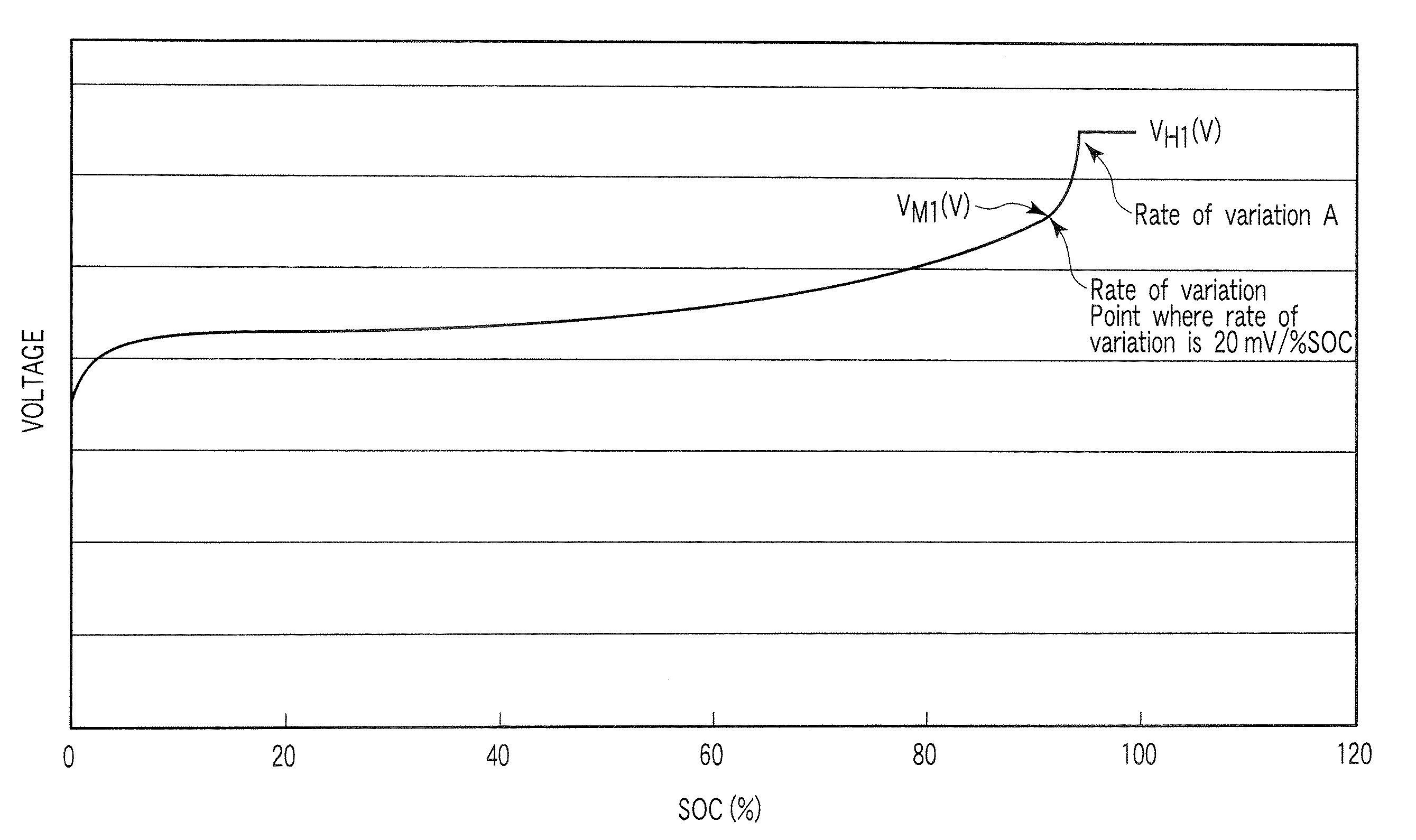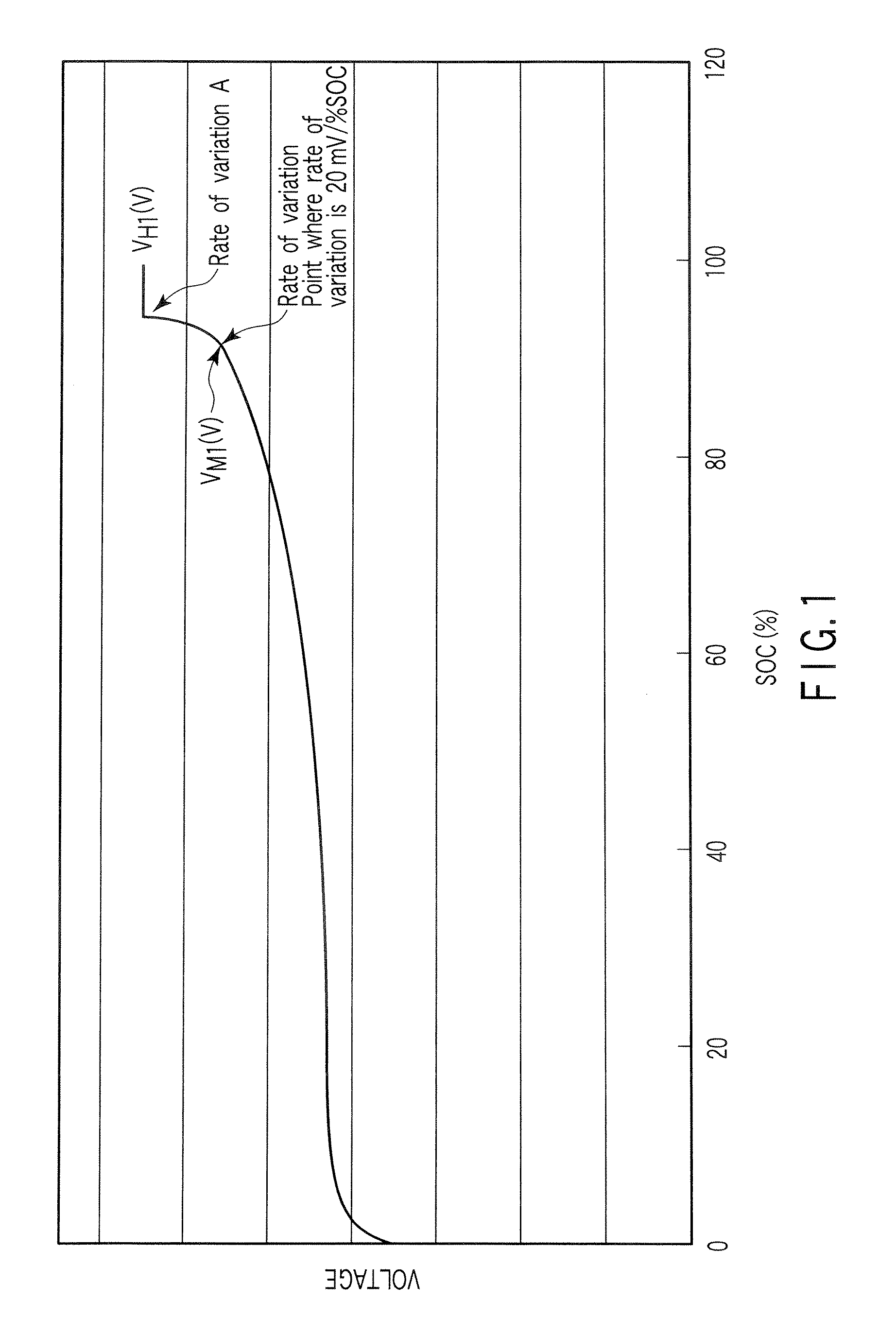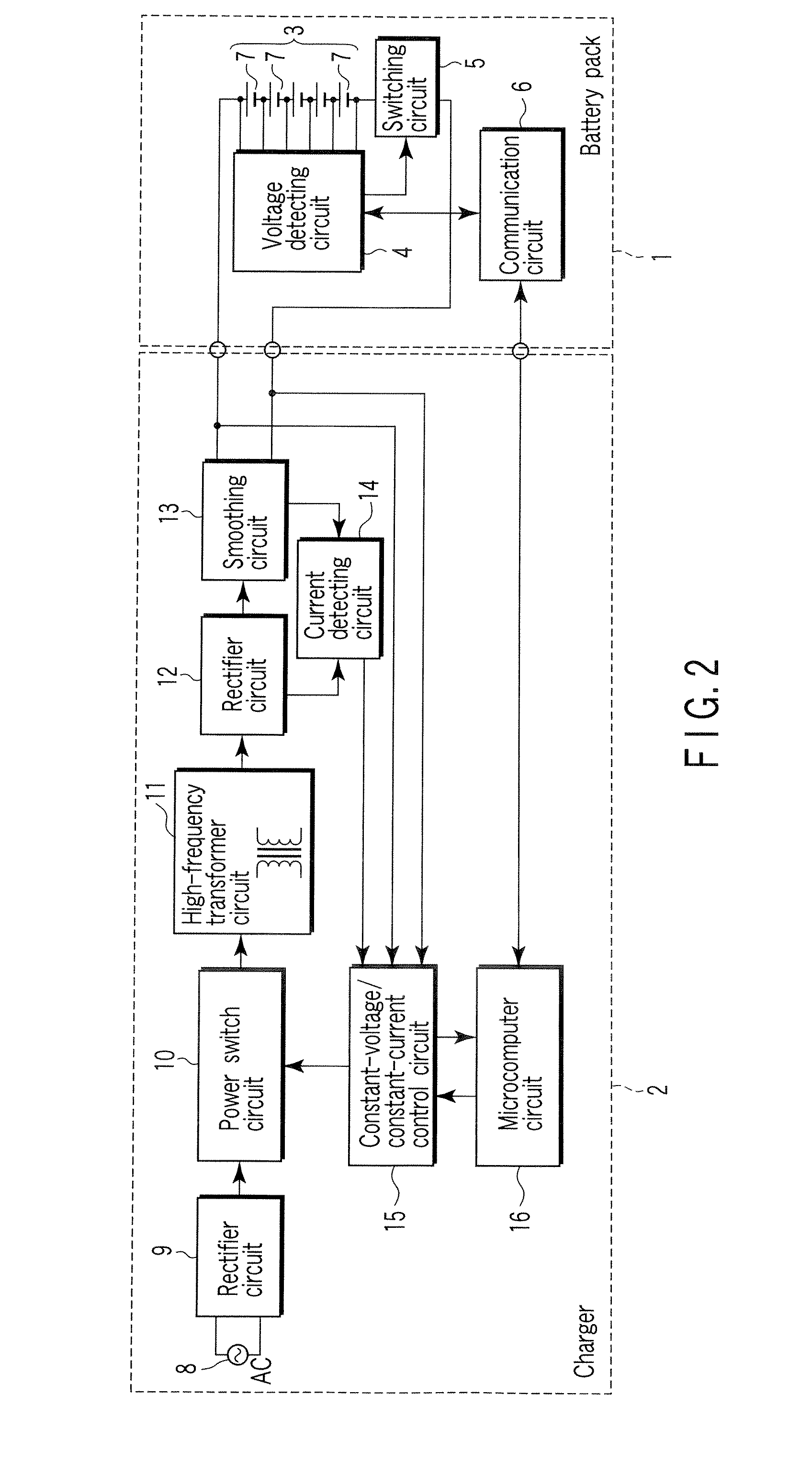Battery module system, method of charging battery module and charging type vacuum cleaner
a battery module and vacuum cleaner technology, applied in the direction of cell components, instruments, sustainable manufacturing/processing, etc., can solve the problems of shortened overcharged state, and high voltage of unit cells, and achieve the effect of reducing the cycle life of battery modules and reducing the cost of battery modules
- Summary
- Abstract
- Description
- Claims
- Application Information
AI Technical Summary
Benefits of technology
Problems solved by technology
Method used
Image
Examples
first embodiment
[0040]A method of charging a battery module according to a first embodiment will be explained.
[0041]The battery module is formed by connecting plural battery units in series. Each of the battery units comprises at least one unit cell. When the battery unit comprises plural unit cells, it is desirable to form one battery unit by connecting unit cells in parallel.
[0042]FIG. 1 shows one example of a charge curve when a nonaqueous electrolyte secondary battery used as a unit cell is charged at a current of 1 C at 25° C. by using a method of charging a battery module according to the first embodiment. Here, 1 C is the current required to discharge a unit cell in one hour and the value of the nominal capacity of a unit cell may be used as the 1 C current for the sake of convenience. In FIG. 1, the abscissa shows the state of charging (SOC) of the nonaqueous electrolyte secondary battery and the ordinate shows the voltage (closed circuit voltage) of the nonaqueous electrolyte secondary bat...
second embodiment
[0052]One example of a battery module system according to a second embodiment of the present invention will be explained in detail.
[0053]FIG. 2 is an example of the block diagram of a battery module system according to the second embodiment of the present invention. The battery module system comprises a battery pack 1 and a charger 2. The battery pack 1 comprises a battery module 3 and a protective circuit. The protective circuit contains a voltage detecting circuit 4, a switching circuit (SW circuit) 5 and a communication circuit 6. The battery module 3 comprises plural battery units 7 constituted of a unit cell connected in series. As the unit cell, a nonaqueous electrolyte secondary battery is used. Although the number of series is 5 in FIG. 2, this number may be 2 or more and optional. However, if the number of series is too large, it is difficult to detect the voltage using one voltage detecting circuit and therefore, the circuit is complicated. Therefore, the number of series ...
third embodiment
[0119]It is desirable for the battery module system according to the second embodiment of the present invention to be used in the field requiring the large current performance and the charge-discharge cycle performance. To be more specific, it is desirable for the battery module system according to the second embodiment of the present invention to be used in the power source for a digital camera and for the vehicles such as the hybrid electric automobiles having two to four wheels, electric automobiles having two to four wheels, the electric mopeds, and the charging type vacuum cleaner. It is preferable to be used for the vehicles.
[0120]A vehicle according to a third embodiment of the present invention comprises the battery module system according to the second embodiment. The vehicle noted above includes, for example, a hybrid electric automobile having 2 to 4 wheels, an electric automobile having 2 to 4 wheels, and an electric moped. FIGS. 10 to 15 show various type of vehicles ha...
PUM
 Login to View More
Login to View More Abstract
Description
Claims
Application Information
 Login to View More
Login to View More - R&D
- Intellectual Property
- Life Sciences
- Materials
- Tech Scout
- Unparalleled Data Quality
- Higher Quality Content
- 60% Fewer Hallucinations
Browse by: Latest US Patents, China's latest patents, Technical Efficacy Thesaurus, Application Domain, Technology Topic, Popular Technical Reports.
© 2025 PatSnap. All rights reserved.Legal|Privacy policy|Modern Slavery Act Transparency Statement|Sitemap|About US| Contact US: help@patsnap.com



